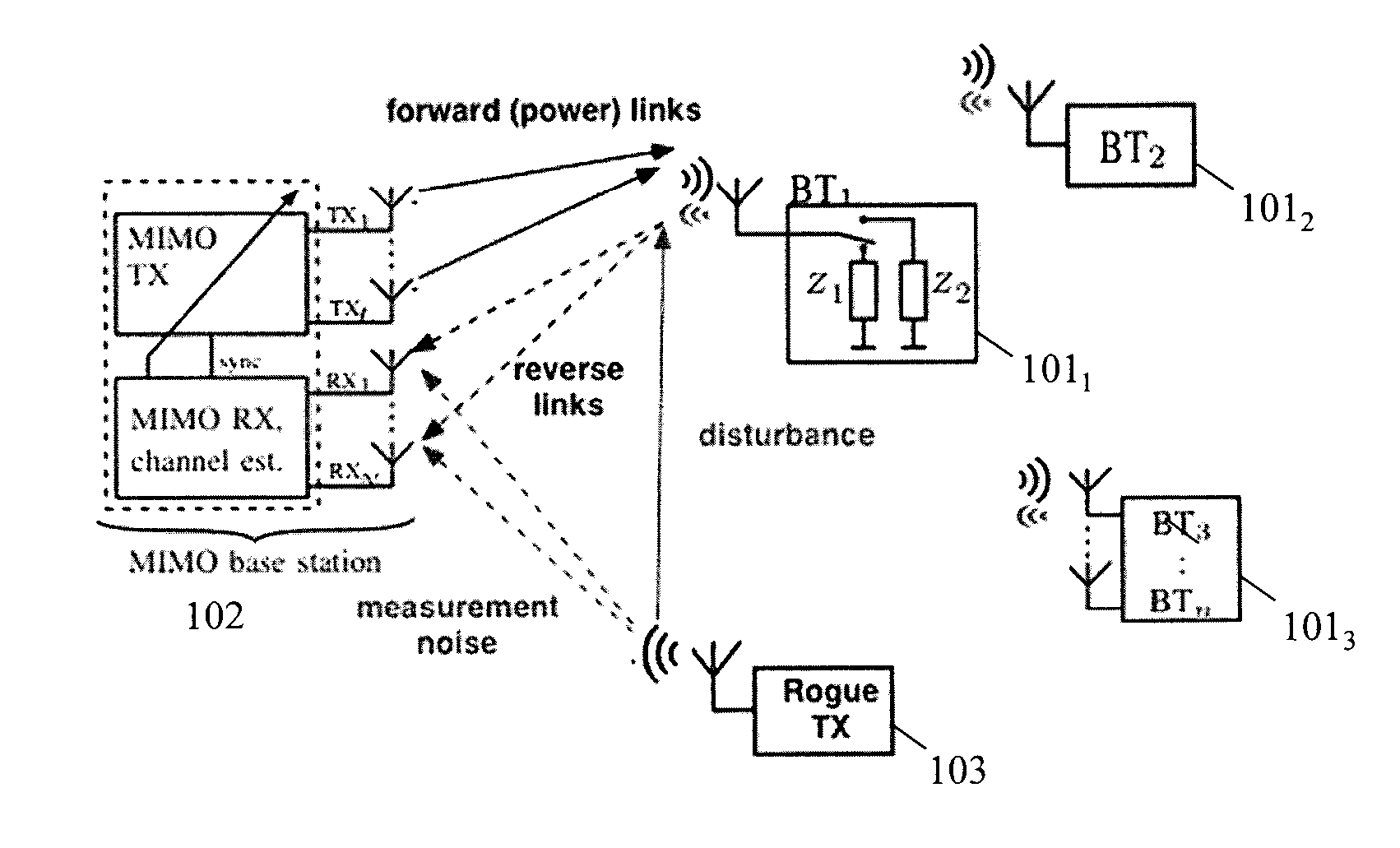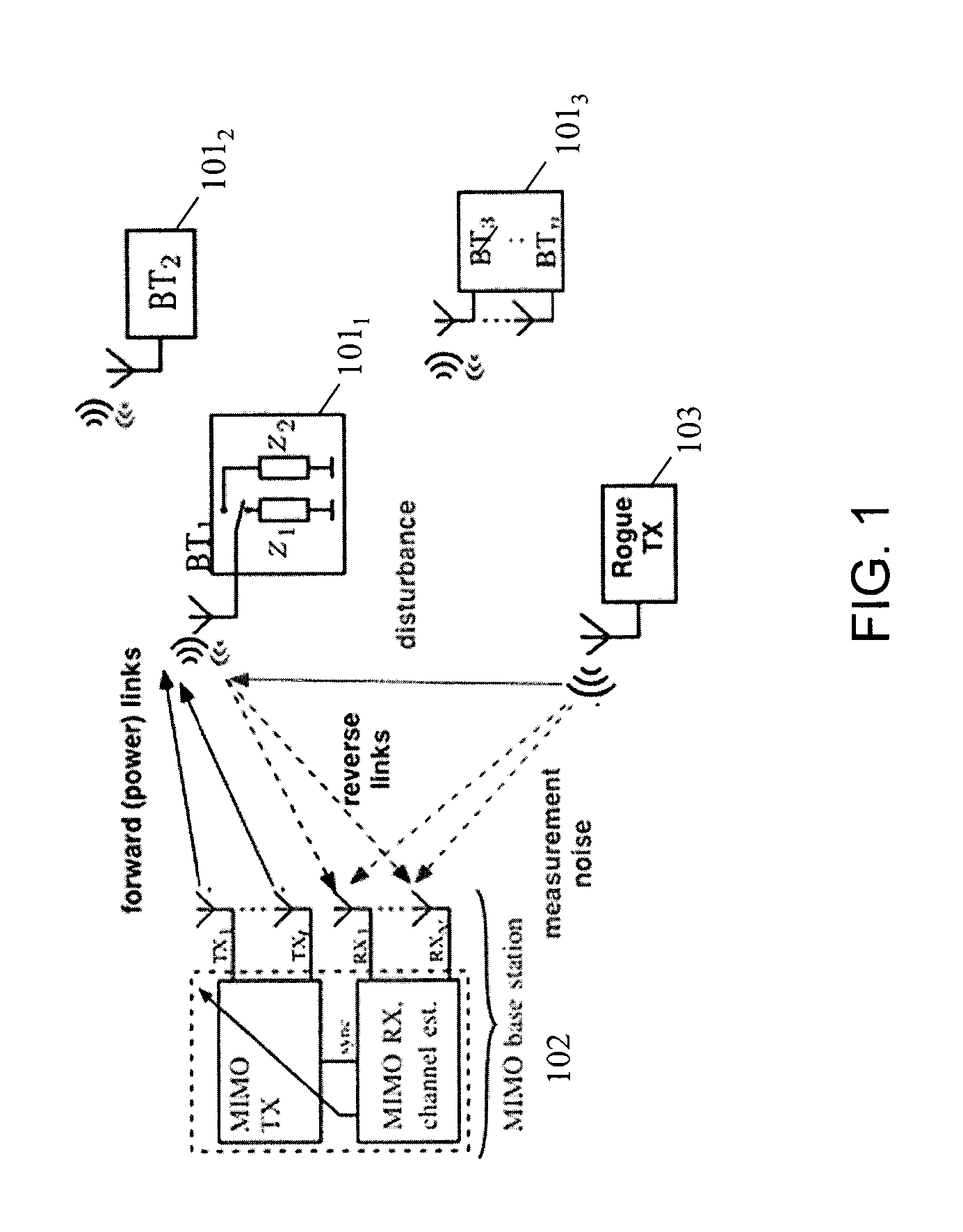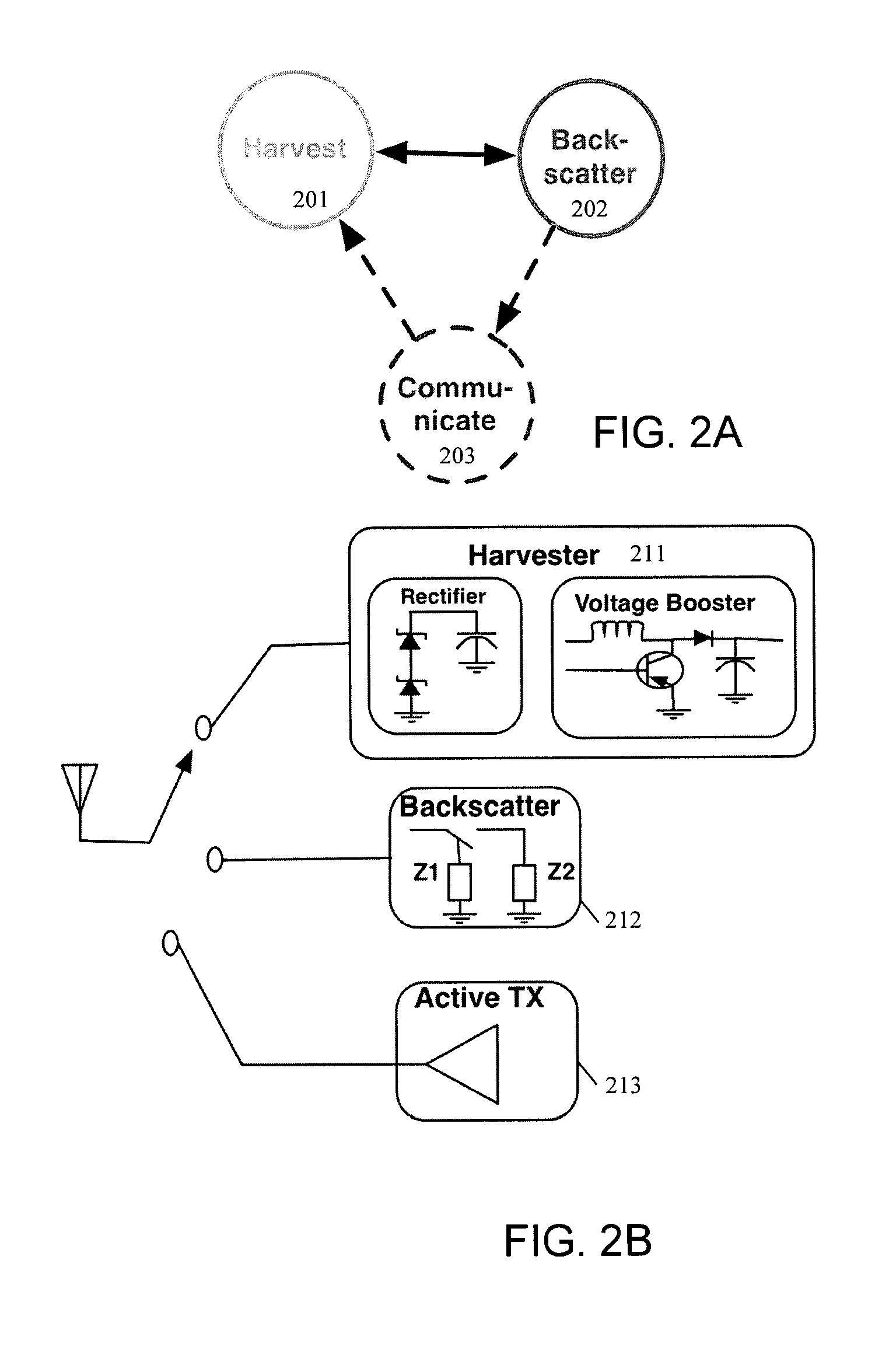Real-time wireless power transfer control for passive backscattering devices
a backscattering device and real-time wireless technology, applied in the field of wireless power transfer, can solve the problems of increasing the transmission power of the interrogator (reader), and reducing the transmit power of the interrogator (reader)
- Summary
- Abstract
- Description
- Claims
- Application Information
AI Technical Summary
Benefits of technology
Problems solved by technology
Method used
Image
Examples
Embodiment Construction
[0026]Embodiments of the present invention include RF tags and components in wireless communication systems (e.g., Wi-Fi communication systems) that provide power to such tags. The tags perform RF energy harvesting and include a backscatter transponders which provide an indirect indication of the RF power incident upon that tag. Such tags may be part of a sensor network. In one embodiment, the tags perform energy harvesting, collect and process sensor data, and communicate data using standard RF communication techniques (e.g., Wi-Fi).
[0027]In the following description, numerous details are set forth to provide a more thorough explanation of the present invention. It will be apparent, however, to one skilled in the art, that the present invention may be practiced without these specific details. In other instances, well-known structures and devices are shown in block diagram form, rather than in detail, in order to avoid obscuring the present invention.
[0028]Some portions of the detai...
PUM
 Login to View More
Login to View More Abstract
Description
Claims
Application Information
 Login to View More
Login to View More - R&D
- Intellectual Property
- Life Sciences
- Materials
- Tech Scout
- Unparalleled Data Quality
- Higher Quality Content
- 60% Fewer Hallucinations
Browse by: Latest US Patents, China's latest patents, Technical Efficacy Thesaurus, Application Domain, Technology Topic, Popular Technical Reports.
© 2025 PatSnap. All rights reserved.Legal|Privacy policy|Modern Slavery Act Transparency Statement|Sitemap|About US| Contact US: help@patsnap.com



